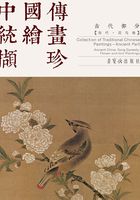
The Preface for Traditional Chinese Painting Series
Chinese paintings are well-established and spectacular, with a longstanding history. As early as over 1500 years ago, in the Wei, Jin and Southern and Northern Dynasties, there emerged many great painters including Gu Kaizhi, Lu Tanwui, Cao Buxing and Zhang Sengyao and a rich variety of paintings, calligraphy works as well as theories. In the Tang and Song Dynasties, with social stability, economic prosperity and active and frequent Sino-foreign cultural exchanges, Chinese painting present-ed a picture of prosperity and resplendence. Figure paintings made as-tounding advances including those from Wu Daozi and Yan Liben; land-scape paintings as well as bird-and-flower paintings blossomed in radiant splendor including those from Wang Wei, Jing Hao, Guan Tong, Dong Yuan, Ju Ran and Zhao Ji; horse paintings and ruler paintings flourished including those from Zhang Xuan and Zhang Zeduan, all shining as the stars of heaven throughout the history. Since the beginning of Yuan Dynasty, scholar-bureaucrats created paintings with their extraordinary spirit and mettle, which enriched the connotation of Chinese paintings.The works of Zhao Mengfu, Huang Gongwang, Wang Meng and Ni Zan became the mark of the peak of literati paintings. Literati paintings began from Yuan Dynasty, while there were still many great painters in Ming and Qing Dynasties. The paintings by Shen Zhou, Wen Zhengming, Dong Qichang, Chen Chun, Xu Wei, Chen Hongshou, Bada Shanren and Shi Tao are novel, original, inimitable, magnificent and spectacular, which have been widely acclaimed as the peak of perfection by later gen-erations.
Now, the tendency of multi-cultural integration emerges. Chinese paintings, on the basis of inheriting the tradition, are constantly preoc-cupied with foreign cultures and tend to be diversified in content and form, showing a picture of prosperity in Chinese art history, just like a hundred flowers in bloom. Chinese paintings have already formed their own styles and cultural traditions. With the change of times, the appear-ance of Chinese paintings is changing, but the spirit will always remain the same. The inheritance of education of Chinese paintings mostly relies on the teaching and demonstration by teachers and the imitating of pow-der painting and manuscripts. Well-printed transcriptions can be used to learn and experience the delicacy and charm of pen and ink or serve as valuable materials to explore the essence of Chinese paintings. Therefore, we edit the Traditional Chinese Painting Series meticulously, classify them by age, painters, painting themes, styles and skills and bind classical masterpieces widespread in the history into a book, in large paper edition, with exquisite full color printing, to provide the next first-class authentic models for art lovers at both home and abroad. We believe readers will deeply appreciate and taste the broadness and profoundness of the Chi-nese paintings with careful comprehension.